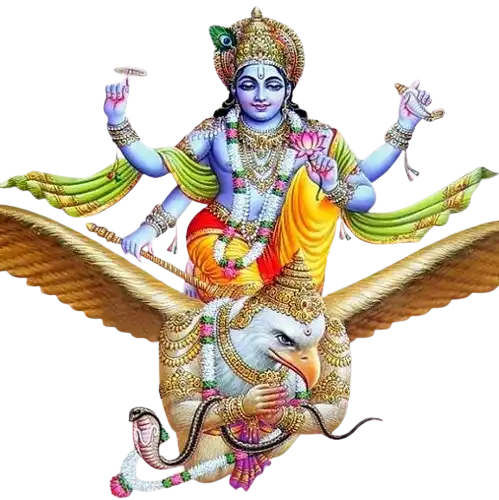1. Understanding Lord Vishnu
Vishnu is depicted lying on the cosmic serpent Ananta, in the ocean of the universe. From his navel springs a lotus, upon which sits Brahma, the creator. Vishnu's consort is Lakshmi, the goddess of wealth and prosperity. He is portrayed with four arms, holding a conch (shankha), a discus (chakra), a mace (gada), and a lotus, symbolizing his omnipresence, omnipotence, and the beauty of the universe.
2. The Dashavatara: Vishnu's Ten Avatars
Vishnu's ten principal avatars, known as the Dashavatara, are believed to have been manifested to save the world from destruction and restore dharma. These include:
- Matsya (The Fish) - Saves the Vedas and sages from a deluge.
- Kurma (The Tortoise) - Supports the churning of the ocean.
- Varaha (The Boar) - Rescues Earth from the demon Hiranyaksha.
- Narasimha (The Man-Lion) - Destroys the tyrant Hiranyakashipu.
- Vamana (The Dwarf) - Subdues the demon king Bali.
- Parashurama (The Warrior with an Axe) - Brings the warrior class in check.
- Rama (The Prince of Ayodhya) - Kills the demon king Ravana.
- Krishna (The Divine Statesman) - Plays a key role in the Mahabharata and delivers the Bhagavad Gita.
- Buddha (The Enlightened One) - Teaches the middle path for renunciation.
- Kalki (The Mighty Warrior) - Predicted to appear at the end of the current Kali Yuga to eradicate evil and restore dharma.
3. Vishnu's Symbolism and Worship
The symbols associated with Vishnu—conch, discus, mace, and lotus—have deep spiritual meanings, representing the creation, preservation, and destruction of the universe. Vishnu's worship involves rituals and prayers, chanting of mantras, and reading scriptures. Festivals like Vaikuntha Ekadashi and Rama Navami are celebrated with great fervor, marking the descent of Vishnu to earth in his different avatars.
4. FAQs
Lord Vishnu is known as the Preserver because his primary role in the cosmic order is to protect the universe and maintain the balance between good and evil through his various avatars.
Vishnu's avatars are manifested in times of cosmic imbalance or when dharma is threatened by evil forces. Each avatar has a specific purpose to restore peace and order.
Yes, Lord Vishnu can be worshipped by anyone. His teachings and the stories of his avatars transcend cultural, geographical, and societal barriers, offering universal lessons of virtue, righteousness, and compassion.
The lotus in Vishnu's hand symbolizes purity, beauty, and the unfolding of creation. It represents spiritual perfection and the blossoming of consciousness amidst the murky waters of material existence.
5. Online Resources
-
Virtual Tours of Vishnu Temples: Explore the architectural grandeur and spiritual ambiance of famous Vishnu temples through virtual tours available on temple websites and cultural platforms.
-
Scriptures and Philosophical Texts: Access translations and commentaries of important texts like the Bhagavad Gita, Vishnu Purana, and other scriptures that highlight Vishnu's teachings and avatars.
-
Festivals and Rituals: Learn about the rituals and celebrations associated with Vishnu's worship through cultural blogs, websites, and social media channels that offer insights into traditional practices.
-
Art and Iconography: Discover the rich tradition of Vishnu's depiction in art and sculpture through online galleries, museums, and academic articles that explore his symbolism and significance.
6. Conclusion
Lord Vishnu's enduring legacy as the Preserver of the Universe encompasses a vast array of teachings, myths, and traditions that continue to inspire and guide humanity. Through his avatars, Vishnu demonstrates the importance of righteousness, compassion, and the perpetual cycle of creation, preservation, and renewal. His worship, deeply embedded in the cultural fabric of Hinduism, offers a pathway to understanding the complexities of the cosmos and the virtues essential for harmony and spiritual growth.

